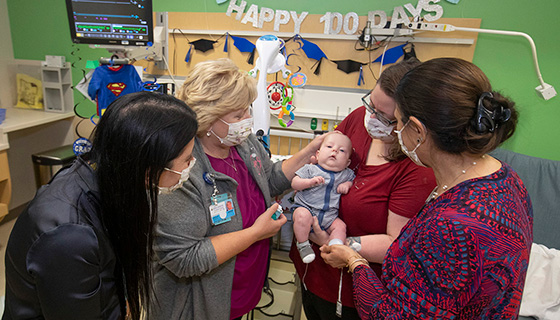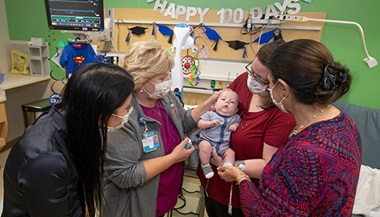Gastroschisis
What is gastroschisis?
Gastroschisis is a birth defect in which an infant's intestines stick out of the body through a defect on one side of the umbilical cord. The child's intestines can be easily seen. The condition is similar to an omphalocele, a birth defect in which the infant's intestine or other abdominal organs stick out of the belly button area. Other associated congenital defects are rare in patients with gastroschisis.
Symptoms
- Lump in the abdomen
- Intestine sticks through the abdominal wall near the umbilical cord
- Problems with movement and absorption in the gut due to the unprotected intestine being exposed to irritating amniotic fluid
Diagnosis
Physical examination of the infant is sufficient for the health care provider to diagnose gastroschisis. The mother may have shown signs indicating excessive amniotic fluid, a condition called polyhydramnios. Prenatal ultrasonography often identifies gastroschisis.
Treatment
- If identified before birth, mothers with gastroschisis need special monitoring to make sure the unborn baby remains and healthy. Plans should be made for careful delivery and immediate management of the problem after birth.
- The treatment for gastroschisis is surgery. A surgeon will put the bowel back into the abdomen and close the defect, if possible. If the abdominal cavity is too small, a mesh sack is stitched around the borders of the defect and the edges of the defect are pulled up. Over time, the herniated intestine falls back into the abdominal cavity, and the defect can be closed.
- Other treatments for the baby include nutrients by IV and antibiotics to prevent infection. The baby's temperature must be carefully controlled, since the exposed intestine allows a lot of body heat to escape.
Prognosis
Likelihood of recovery is good if the abdominal cavity is relatively large enough. A very small abdominal cavity may result in complications requiring additional surgery.



